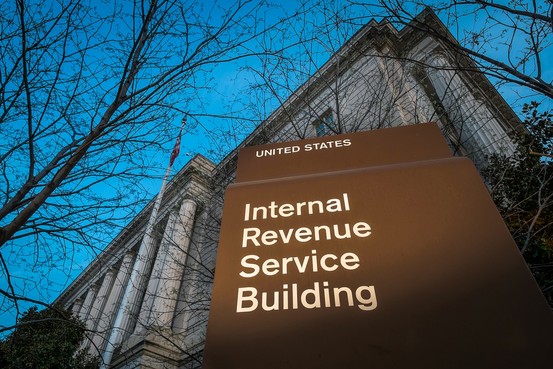This article from The Wall Street Journal explains the leniency granted by the Internal Revenue Service (IRS) for those who failed to report offshore accounts by accident.
The Internal Revenue Service is sharply increasing the penalties on U.S. taxpayers who hide assets abroad, while lowering or eliminating fines on taxpayers if their failure to disclose offshore accounts was unintentional, the agency said Wednesday.
The changes mark the latest stage in a five-year-old U.S. government campaign to force millions of U.S. taxpayers who live abroad or have accounts in other countries to disclose accounts and pay what they owe. It also includes a new law that pressures foreign banks to share information about U.S. account holders starting July 1.
The campaign, which was the focus of a page-one article in The Wall Street Journal on Tuesday, has helped the IRS collect some $6.5 billion in taxes, interest and penalties from more than 45,000 taxpayers who have come forward voluntarily, the agency said. Federal prosecutors have filed more than 100 criminal indictments since the campaign began in 2009.
Yet record numbers of U.S. taxpayers are cutting official ties with the U.S. amid the campaign, by renouncing their citizenship or turning in their green cards. Experts say the spike is a response to tougher enforcement and stiff penalties that can equal half the balance of a foreign account for each year a required disclosure form isn’t filed—even if no tax is owed.
The IRS has been accused of coming down disproportionately hard on taxpayers with small accounts, and unfairly burdening people who didn’t understand the filing requirements.
The agency acknowledged the issue Wednesday. “Our aim is to get people to disclose their accounts, pay the tax they owe and get right with the government,” IRS Commissioner John Koskinen said in a statement, adding that “a compliance regime that is too harsh won’t net the desired result.”
Experts said the new rules could make it easier for taxpayers to approach the IRS if they weren’t violating the law willfully.
“The changes will help many people both in the U.S. and abroad who didn’t mean to cheat on their taxes by having offshore accounts,” said Seth Entin, a lawyer at Greenberg Traurig LLP in Miami who has handled hundreds of taxpayer confessions. “But it pushes people who have been trying to hide money abroad to come forward to the IRS sooner.”
Yet some lawyers cautioned that the IRS would have the final say on whether a taxpayer’s failure to comply with the law was unintentional.
Taxpayers who decide to stay in the shadows could face far stiffer penalties under the new rules. The IRS said it will increase penalties to 50% of the balance in an account, up from 27.5%, for taxpayers who apply to enter its limited-amnesty program after it becomes public knowledge that the financial institution where the account is held is under investigation by U.S. authorities.
About a dozen Swiss banks are being investigated by the U.S., and scores of others currently are negotiating penalties with U.S. authorities.
The U.S. launched the campaign in the wake of UBS AG UBSN.VX -0.85% ‘s 2009 admission that it helped American taxpayers hide money abroad. The Swiss banking giant paid $780 million to the U.S. and turned over information on more than 4,400 accounts.
The case marked the beginning of the end for Swiss-bank secrecy. For decades, wealthy taxpayers were able to hide assets in well-known tax havens such as Switzerland, the Cayman Islands and Panama.
U.S. authorities used information from UBS to pursue tax cheats and pressure their advisers. Credit Suisse Group pleaded guilty to similar charges in May and agreed to pay $2.6 billion.
The new rules will allow a far wider range of taxpayers to qualify for lower penalties, or none. Previously, the IRS allowed only those who owed $1,500 or less in tax to qualify, a stringent limit that many couldn’t meet. Now it is eliminating that requirement and others for taxpayers who say their violations were unintentional.
If the IRS accepts their claims, U.S. taxpayers who live in other countries will face no penalties for failing to disclose income or assets abroad. Instead, they will be liable for taxes they owe for the previous three years. U.S. taxpayers who reside in the U.S. and have undeclared foreign accounts could face penalties capped at 5%, on top of taxes owed.
“While these modifications don’t address all our concerns, I believe they are a significant step in the right direction,” Nina Olson, the national taxpayer advocate, an official IRS ombudsman, said in a statement.
One potential drawback: Taxpayers who come forward in the future may end up faring better than those who heard about the U.S. campaign in the past and presented their case to the IRS then. For example, experts said, taxpayers from the latter group who owed more than $1,500 in taxes could have paid a penalty as high as 27.5%.
In addition, taxpayers abroad face the risk of double taxation, said John Richardson, a Toronto lawyer who works with U.S. taxpayers living in Canada. “The problem is that, penalties aside, the U.S. tax laws are very punitive for U.S. citizens abroad,” he said.
Find out more facts about taxation from this Isidor Hefter Facebook page.

















